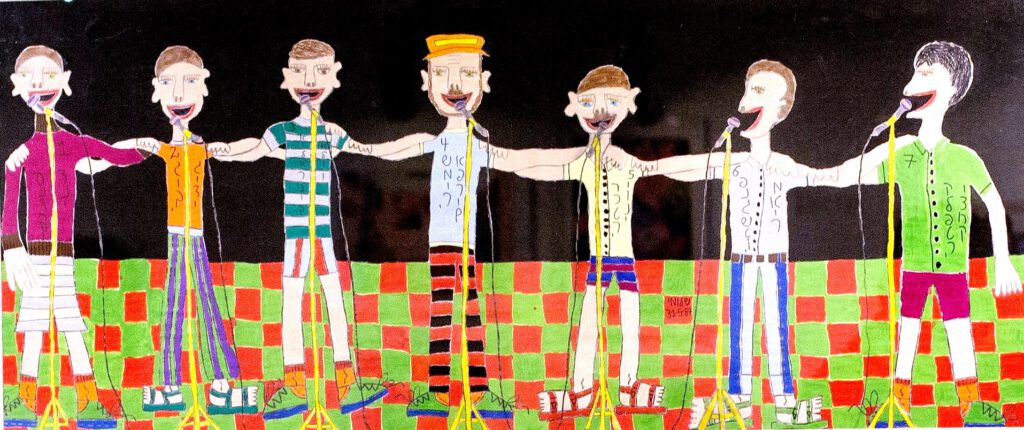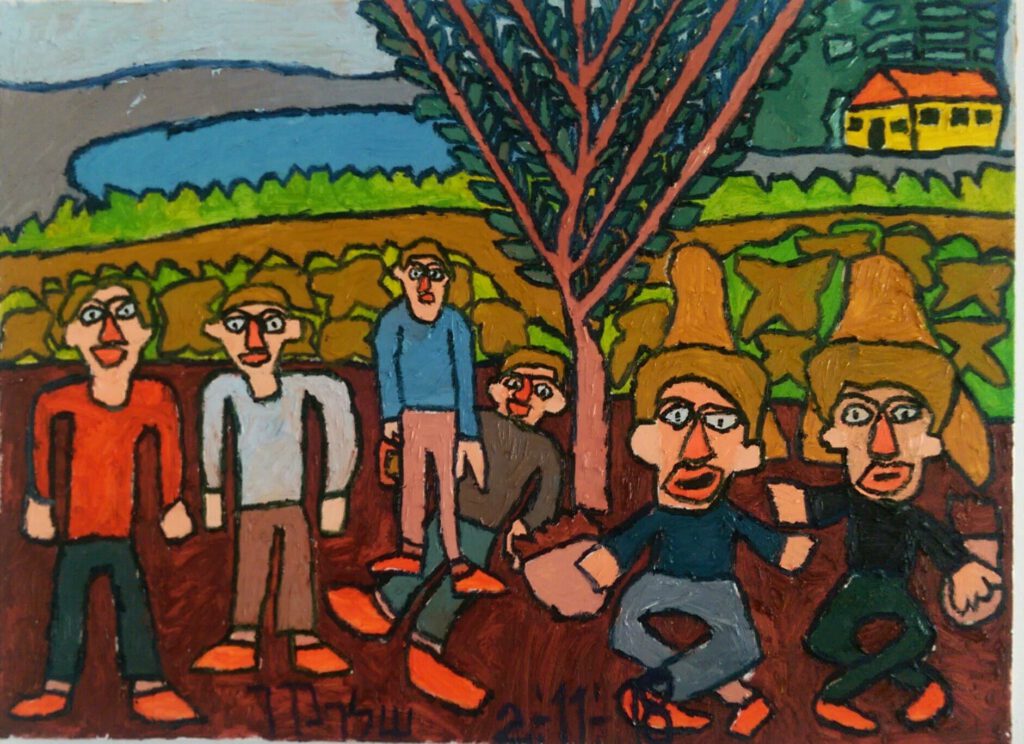In September 2019, the ‘ Tel Aviv Office Gallery", curated by Rachel Sukman, held an exhibition displaying extraordinary works.
The artist Shlomi Leizerov, than fifty-three, resides in Kfar Ofarim Village in Israel, which was founded by the Israeli Autism Association, where he spends most of his time. His childhood shaped both his adulthood and his creative output. At the age of five, having been diagnosed with communication impairment, he began to draw and sculpt with plasticine. His parents displayed openness toward his disabilities and allowed him the freedom to create anywhere in the house he desired. This aided him in freely expressing his inner creativity, a creativity fostered by an unknown, unsolvable world.
Shlomi has never enjoyed full communication with his environment, yet his ability to enjoy concerts and hiking trips attests to his capacity to ‘experience’. Later, he began to study painting at an art studio in the city of Ashdod. A chance coincidence contributed to him being discovered as an artist. A friend of his parents connected him with curator Rachel Sukman, who dared to take up the gauntlet and showcase Shlomi’s works in his first solo exhibition. The works displayed form a fascinating window offering a glimpse into a locked and hitherto unfamiliar world. The paintings appear childish but are created by an adult who experiences reality in a way that differs from our ‘normal’ perspective. The figures in the paintings, whether a group or a ‘flock,’ are identical to each other, which supposedly indicates that Shlomi experiences his human surroundings as homogenous. His differentiation of individuals in his paintings is negligible.

If that is indeed the case, it suggests how Shlomi’s ‘binary code’ translates his experiences of us ‘normal’ people. If we seem like identical figures to him, that would allow us to better understand the difficulties he experiences in forming individual connections with any of the people around him, except for members of his family with whom he has always been able to maintain eye and motion contact out of intimacy and habit.
Shlomi’s art is defined as outsider art, created outside the boundaries of official culture. Outsider art includes, for example, artwork created by mental patients, people with intellectual disabilities at different levels, and individuals suffering from post-traumatic stress disorders. But Shlomi is not a mental patient. He is a person who is suffering from challenges and obstacles with human communication. Therefore, his imagery is healthy though not standard, according to our preconceived conceptions. His self-portrait intensely demonstrates the suffering Shlomi has experienced being locked behind the bars of his disability. He often uses bright colors and prominent repetition as if attempting to emphasize what he is trying to say.

Both the group portraits and the close-up portraits attest to a bewilderment, as if he is staring at, and to some extent dreading, a reality that for him is unsolvable. The intensity of this constant experience in his life leaps from the canvases of his paintings to the observer’s eye. In that sense, Shlomi’s works are a golden opportunity for us to peer into the soul of a person who does not communicate with us—yet lives among us.
Shlomi Leizarov’s works and fate raise the question of why the sciences of medicine and biology, which have attained huge accomplishments in many fields, are yet to solve the riddle of autism and its causes. There exists behavioral therapy that aims to allow some of those suffering from autism a measure of functional rehabilitation, and even inclusion in society, yet not every autistic person can benefit from it. There are theories that seek to cast the blame for autism on ecology and an environment polluted, among other things, by noise, stress, and radiation, but such theories are yet to be proven. On the other hand, the rate of autistic births has continued to rise as a silent warning to humanity.
There is another philosophical insight that claims a perhaps more cataclysmic cause. This theory suggests that in light of humanity’s uninhibited technological progress that has disrupted the environment, unchecked population growth, and the draining of the Earth’s resources, Nature is signaling to us that there is a limit and that we have reached a point that requires change. Therefore, we can, should we choose to be elected to observe the expanding phenomenon of autism as a sign that Nature is now in the process of creating an alternative to the current state in which humanity and the Earth exist. We may be witnessing the evolutionary process of a new species of human that has yet to develop the ability to survive on its own. And we are privileged to be the godfathers of this wondrous process.

Shlomi Leizerov is an ambassador for a group of people excluded from life as we are accustomed to it. He is a living proof that the members of this group can receive, and give in return, gifts and pleasures that are unique to it alone, such is the value of both Shlomi’s works and the exhibition showcasing them.
Exhibition Curator: Rachel Sukman
Interviewed, written, and edited by: Yoel Emet – Member of the Academic Sector Association of Journalists. (Re edited 1 September 2024)
© All Rights Reserved

